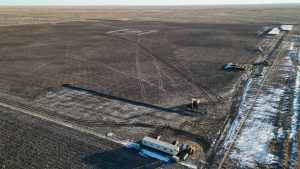The Government of Alberta announced that it plans to move forward on the construction of the Southwest Calgary Ring Road.
The province added that it plans to complete the project within seven years, as a land transfer between Alberta and the Tsuu T’ina Nation dictates.
"It’s a very large project and so for three years, capacity for the industry will be pretty much maxed out as far as the large companies, (are concerned)" said Gene Syvenky, CEO of Alberta Roadbuilders and Heavy Construction Association.
The government committed to honouring the agreement and completing construction of the Southwest Calgary Ring Road within seven years.
"We want to provide a safe, modern highway network that will improve the commutes of Albertans in and around the city of Calgary and support economic growth in the province," said Brian Mason, minister of transportation
Chief Roy Whitney of the Tsuu T’ina Nation said its goal with the Southwest Calgary Ring Road was to create economic opportunity for future generations of the Tsuu T’ina.
"As per the agreement, today’s announcement is an important milestone," he said.
As part of both the north-south and east-west trade corridors, the completed Calgary Ring Road will provide routes for commercial vehicles taking goods across the province or country, and to foreign ports.
The southwest segment of the Calgary Ring Road (CRR) will extend from east of 69 Street SW on Glenmore Trail/Highway 8 south to Macleod Trail (Highway 2A).
The Southwest Calgary Ring Road (SWCRR) is about 16 kilometres long.
An additional 10 kilometres of connector road upgrades will be included in the overall CRR project.
Syvenky said he is confident the massive project can be completed in seven years.
However, he noted that while much attention is paid to new megaprojects, others require more attention.
"We focus so much on these mega projects, but the far more critical issue in Alberta transportation infrastructure is the rehab, but most of the attention is paid to these megaprojects," Syvenky said.
"It’s all a necessary part of a growing economy and growing population, but I think the existing infrastructure is the bigger issue."
The project was made possible by a land transfer between the province and the Tsuu T’ina Nation which was finalized on May 22.
The federal government authorized changes to Nation’s boundaries. The Government of Alberta and Tsuu T’ina Nation originally signed the land transfer agreement in late 2013.
About 2,100 hectares will be given to the nation and more than 400 hectares will be transferred to Alberta.











Recent Comments
comments for this post are closed